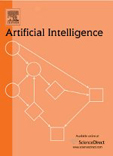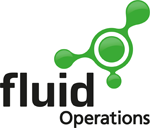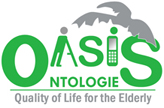Rules to make your Semantic App addictive – Revisited
Half Day Tutorial
Introduction
In many application scenarios useful semantic content can hardly be created (fully) automatically, but motivating people to become an active part of this endeavor is still an art more than a science. In this tutorial we will look into fundamental design issues of semantic-content authoring technology - and of the applications deploying such technology - in order to find out which incentives speak to people to become engaged with the Semantic Web, and to determine the ways these incentives can be transferred into technology design. We will present how methods and techniques from areas as diverse as participation management, usability engineering, mechanism design, social computing, and game mechanics can be jointly applied to analyze semantically enabled applications, and subsequently design incentives-compatible variants thereof. The discussion will be framed by three case studies on the topics of enterprise knowledge management, media and entertainment, and IT ecosystems, in which combinations of these methods and techniques has led to increased user participation in creating useful semantic descriptions of various types of digital resources - text documents, images, videos and Web services and APIs. Furthermore, we will revisit the best practices and guidelines that have been at the core of an earlier version of this tutorial at the previous edition of the ISWC in 2010, following the empirical findings and insights gained during the operation of the three case studies just mentioned. These guidelines provide IT developers with a baseline to create technology and end-user applications that are not just functional, but facilitate and encourage user participation that supports the further development of the Semantic Web.
Motivation
The Semantic Web is gaining momentum. As of today it has reached an order of magnitude of hundreds of billions of RDF triples, most of which being the result of the increasingly popular Linked Open Data community project, supported by related open access-motivated initiatives such as data.gov and its counterparts worldwide, and the solid theoretical and technical foundations of a decade of Semantic Web research and development. Despite these very encouraging statistics, the usage of this wealth of data in high-impact applications and services is currently not more than an exciting prospect. At the same time, it is already clear that the challenges related to purposefully exposing semantic data will require significant shares of human effort, going beyond the enthusiasm of the past couple of years.
The technical aspects of semantic content authoring are already established in the form of methodologies, methods, techniques and software tools supporting critical aspects of content authoring life cycle: the development and maintenance of ontologies, the publication of structured data as RDF, the alignment of heterogeneous schemas and of the underlying data, as well as the semantic annotation of various types of digital resources. However, in parallel to these advancements, we can observe a limited involvement of (non-expert) users in semantic content authoring, which can be explained by the fact that existing tools focus mainly functionality and (semi-)automation, and not on incentive models, participatory methods, and usability issues. The same holds for semantically enabled applications, which rely on a representative user base to create and maintain ontologies as well as semantic descriptions of the underlying data and processes; however, in most of the cases attracting new users and engaging existing ones to contribute remains largely unaddressed.
The question of how to engage a critical mass of Internet users, who are not familiar with semantic technologies, to ensure sustainable growth is more relevant than ever. For ontologies, despite the fact that there are over 25 000 of them published on the Web, a serious and mostly under-addressed problem is the creation of ontology-based metadata by non-experts – end-users, but also traditional Web developers without a background in semantic technologies. This is most notably true for non-textual content, for which automatic approaches still require a significant share of training and human feedback. For Linked Data, the same problem can be observed in the context of interlinking and alignment, and the curation of data sets, to name only two representative examples.
End-user semantic content authoring technology tackling tasks as those just discussed – and its vertical applications - needs to offer appropriate incentives to stimulate and reward user participation. As we have seen in many instances of social software, these mechanisms are likely to make semantic applications produce the same community effects as Web 2.0, resulting in massive generation of useful semantic content. This tutorial will introduce the methodological and empirical grounding for studying and designing such incentives-compatible applications.
Schedule
Monday, October 24th | |
14:00 - 14:45 | Elena Simperl. Human contributions in semantic content authoring |
14:45 - 15:30 | Oksana Tokarchuk. Case study: Enterprise knowledge management at Telefonica |
15:30 - 16:00 | Coffee Break |
16:00 - 16:45 | Markus Rohde, Elena Simperl. Case study: Crowdsourcing the annotation of dynamic Web content at seekda |
16:45 - 17:30 | Carl Goodman. Case study: Content tagging at MoonZoo and MyTinyPlanets |
17:30 - 18:00 | Elena Simperl, Markus Rohde. Ten ways to make your semantic app addictive - revisited |
Organizing Committee
- Elena Simperl, Karlsruhe Institute of Technology, Germany
- Roberta Cuel, University of Trento, Italy
- Markus Rohde, University of Siegen, Germany
- Carl Goodman, Pepper's Ghost Productions Ltd., UK



















